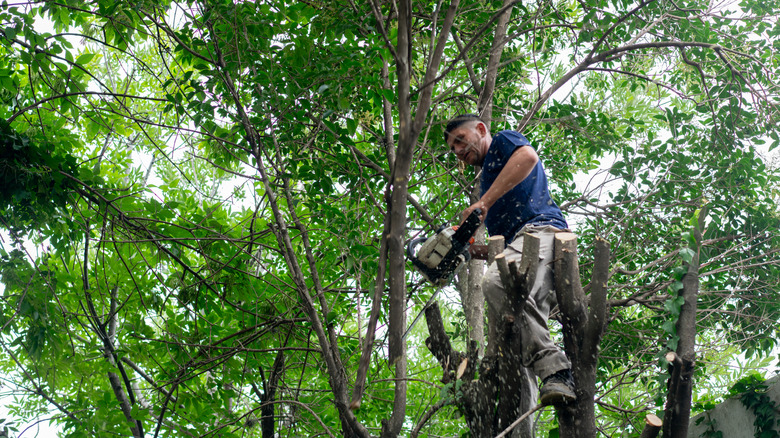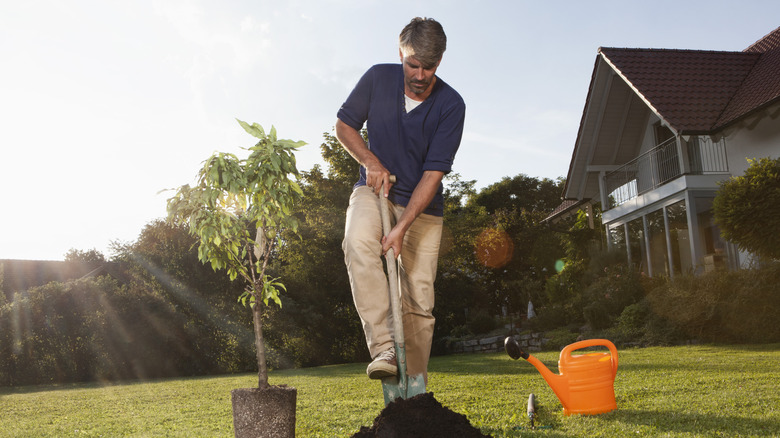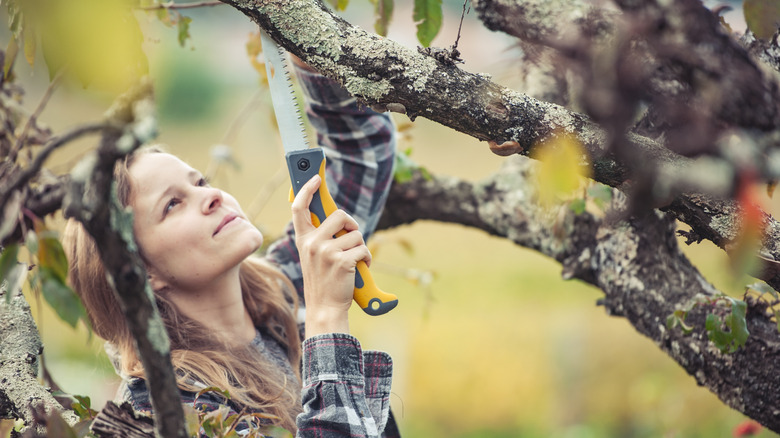Should You Replace A Diseased Tree With The Same Species?
If you've lived in your home for many years, it's easy to feel sentimental about your yard: the Japanese maple that your parents gave you as a housewarming gift, the tulips that emerge around your birthday, the dogwood your kids climbed when they were younger. Although the memories will stay forever, the plants will not. Trees can be vulnerable to infection, and, if you identify these signs of disease, the tree may need to be removed. (In some cases, you can ask the city to remove it for free). The question then is: Do you replace the tree with the same species for the sake of nostalgia?
"The short answer is, no," said Allen Tate, a tree health specialist and certified arborist with Seattle-based Blooma Tree Experts, in an exclusive interview with House Digest. "The pathogen that caused the disease will likely infect the new tree of the same species easily. However, if proper steps are taken to mitigate that pathogen in the surrounding soil ... then it is possible to plant the same species with success."
Selecting a replacement tree
According to Tate, you should only consider a tree of the same species if you plan on treating your soil first, either with a chemical fungicide, such as hydrogen peroxide, or with beneficial bacteria. "If the particular pathogen is notoriously aggressive or difficult to eradicate, then it's best to choose a tree of a different genus, not just a different species," he explained further in his exclusive interview with House Digest, adding that "choosing a tree in a different genus will make it more difficult for the same disease to take hold."
For example, the overarching Pinus (or pine) genus — a category of related plants — encompasses about 115 species or specific varieties, such as ponderosa pine and lodgepole pine. Based on Tate's advice, if your ponderosa pine is infected and the disease is widespread, don't just go with another pine. Choose a replacement from another genus, like a Norway spruce from the Picea genus, or a Douglas fir from the Pseudotsuga genus.
Tate also warned that, in some instances, you should avoid replacing the tree altogether. "Often trees succumb to disease because of the site conditions," Tate said. "If soils are consistently too moist or lacking proper soil structure, and these issues cannot be remedied, then it's best to avoid planting [another tree in] this area."
Tips for preventing common tree diseases
In addition to possibly replacing the original tree with a different species or genus, there are other factors to consider when you're choosing a tree for your front yard, including size and growing preferences. Once you have a new tree in the ground, you must try your best to prevent future tree infections. These may vary depending on the tree genera and species, but some common diseases include Dutch Elm, Thousand Cankers, and Sudden Oak Death, all of which can be lethal.
"The best preventative practice starts with the right plant in the right place, then proper care," Allen Tate told House Digest exclusively. "Proper care consists of deep and infrequent watering, replenishing organic layers at the surface ([this] protects roots/soil and promotes good microbes), comprehensive nourishment, and knowing how and when to prune your tree." You'll have to determine whether trimming or pruning is best for your tree, avoid maintenance errors, and understand if certain mistakes or conditions are keeping your tree from getting enough water.


